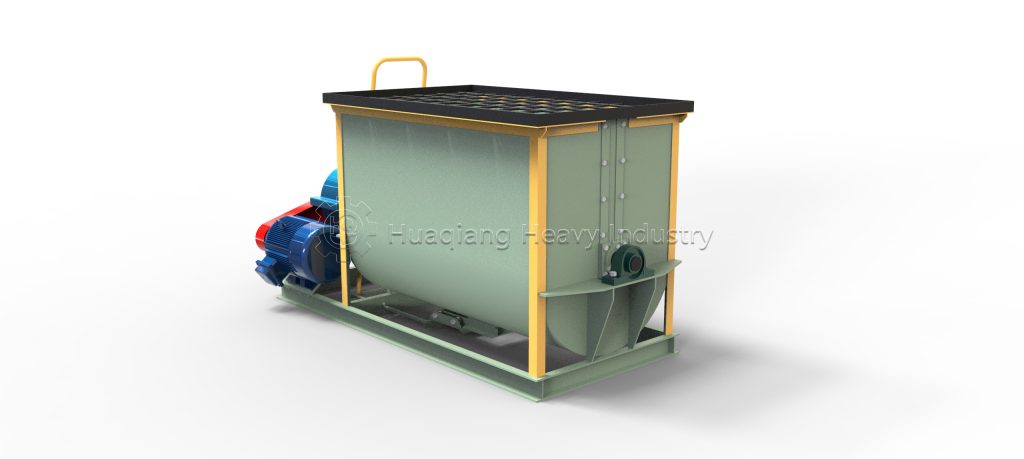Function of Horizontal Mixers

The horizontal mixer serves as the core mixing equipment in fertilizer production lines. With its horizontally mounted mixing shaft and specially designed blades, it achieves homogeneous blending of powdered, granular, or viscous materials. Its unique horizontal structure delivers exceptional performance in mixing uniformity, processing capacity, and operational stability[1].
Why Choose Horizontal Mixers?
Compared to vertical mixers, horizontal mixers offer distinct advantages:
- High Mixing Efficiency: Creates complex material movement patterns, reducing mixing time by 30-50%
- Large Capacity: Single-unit capacity up to 20m³, ideal for large-scale continuous production
- Low Residue: Unique discharge design ensures residue rates below 0.5%, minimizing cross-contamination
- Material Versatility: Handles everything from powders to viscous pastes
Typical Applications:
- Premixing of compound fertilizer ingredients
- Final blending of organic-inorganic fertilizers
- Uniform dispersion of micronutrient additives
- Mixing of high-viscosity materials
Role in Fertilizer Production Lines
In modern fertilizer production, horizontal mixers are typically positioned between raw material preparation and granulation sections, playing a critical role in ensuring formula accuracy and product uniformity. For complex compound fertilizers with diverse ingredients, horizontal mixers become indispensable[2].
Selection Guidelines
Key considerations when selecting horizontal mixers:
- Material characteristics (particle size, density, viscosity)
- Production scale (batch or continuous)
- Required mixing uniformity
- Ease of cleaning and maintenance
For high-value specialty fertilizer production, consider models equipped with liquid addition systems and online monitoring devices[3].
References:
[1] “Fertilizer Production Equipment and Technology Manual”, China Agricultural Press, 2019 [2] Smith, J. “Mixing Technology in Fertilizer Production”, IFDC Technical Bulletin, 2020 [3] European Fertilizer Equipment Manufacturers Association (EFEMA) Technical Standards, 2021 Edition




